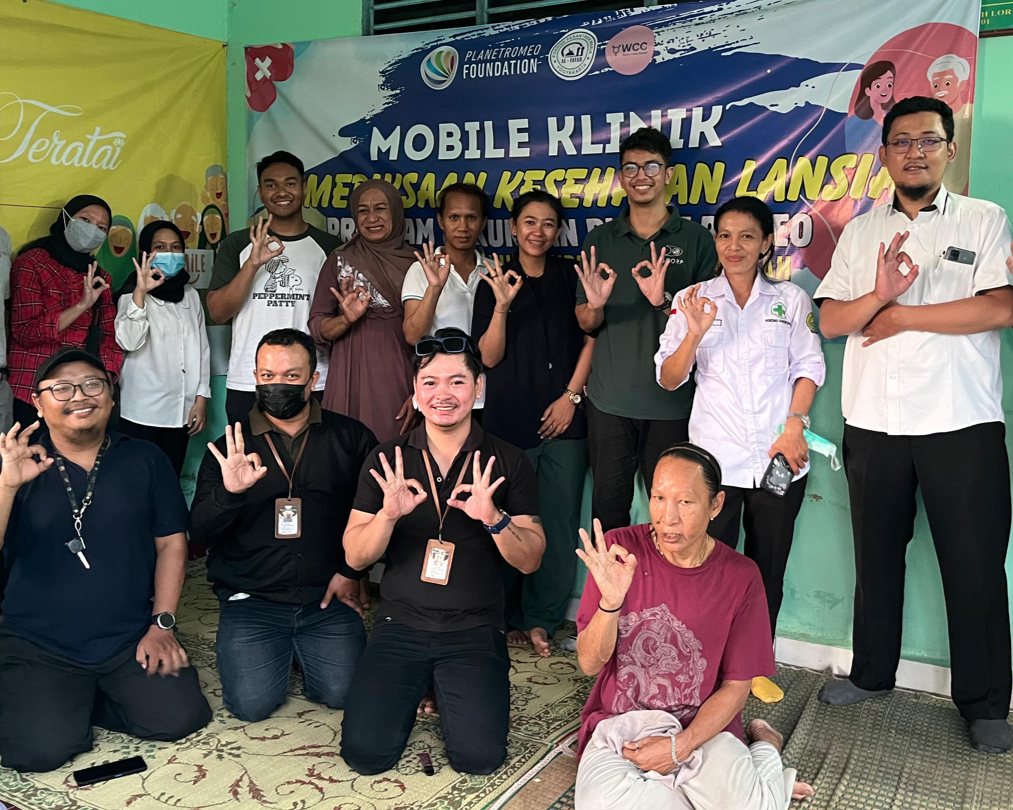Lintang's fieldwork in Indonesia explored the accessibility and dignity of care for older transgender individuals and people living with HIV (PLHIV). His research is embedded in the work of the Waria Crisis Center (WCC), a community-run shelter for older waria, a term in Indonesian that blends wanita (woman) and pria (man), representing the transgender community.
The WCC is not just a shelter but a deeply rooted support network. It serves as a haven for those systematically excluded from family and formal health systems, offering housing, companionship, medical coordination, and, for many, dignified end-of-life care.
In the first weeks of fieldwork, Lintang joined routine health examinations in partnership with a local community health center. These visits included tuberculosis screenings, blood pressure and glucose checks, and voluntary counseling and testing (VCT) for HIV. These routine services often brought far more urgent and complex social realities to light. One such case involved the rescue of an estranged PLHIV who had been living in extreme neglect. With no surviving support system, the individual required assistance not only to access hospital care but also basic needs like feeding and hygiene. When the time came, it was the community, not family, who stepped in to arrange the funeral and burial.
Lintang’s fieldwork revealed both the hardship and resilience that define life at the margins. He joined caregivers from the shelter on a rare beach outing—a moment of rest and recreation for those providing daily care under difficult conditions. He also participated in social activities like Shibori fabric dyeing with elderly residents and PLHIV—small but meaningful gestures that help preserve community identity, connection, and dignity.
As part of the shelter’s sustainability efforts, the community launched a small aloe vera drink business in front of the building. While the model hasn’t yet met expectations, it reflects the shelter’s broader empowerment strategy through economic participation. Similarly, caregiver capacity has grown: many are now trained to perform routine health assessments independently, including blood pressure checks and glucose testing. In some cases, elderly residents now conduct these checks independently, enabling better communication with outside health providers and more autonomy in managing their health.
Lintang also documented the stark realities of shelter life. In a facility with limited space, patients with advanced illnesses like congestive heart failure may reside in the living room, where their bed is visible to anyone who walks through the front door. Rather than hiding this, the community embraces it. For many, visibility is not a threat but a form of inclusion.
He also visited a government-run cemetery reserved for the most marginalized: those without formal identification, the incarcerated, the unhoused, and the abandoned. Space is limited. Tombstones are no longer allowed. Yet the community continues to care for its own, ensuring that even in death, no one is erased.
Throughout his time in the field, Lintang bore witness to deep vulnerability and unwavering care. The Waria Crisis Center operates with limited resources but immense collective strength. His work highlighted the ways in which health, identity, aging, and social exclusion collide—and how community-based models can meet those challenges with dignity and love.
For Lintang, this fieldwork was not just research. It was an affirmation of the power of grassroots care systems and a call to build more inclusive models of health delivery that recognize and respond to those too often left behind.
